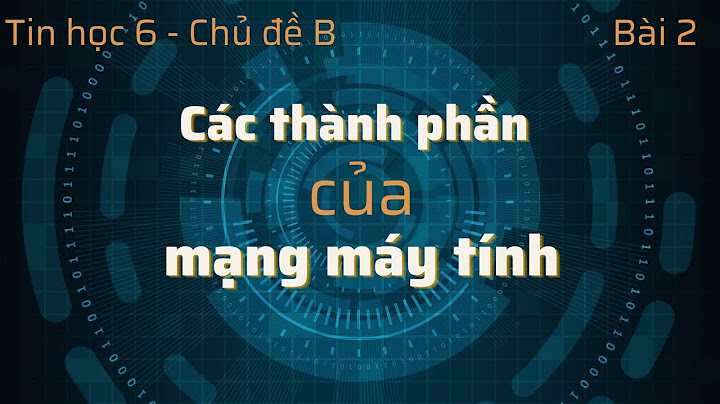Phong cách này được đặc trưng ở việc nhà lãnh đạo Chỉ thị từ trung bình đến cao và Quan hệ từ trung bình đến thấp. Quyết định được đưa ra nhằm đẩy nhanh quá trình hoàn thành nhiệm vụ, đồng thời kinh nghiệm của cấp trên được chia sẻ cho cấp dưới. Quá trình giao tiếp chủ yếu diễn ra theo chiều từ trên (cấp quản lý) xuống dưới – trong đó, nhà lãnh đạo theo tình huống chú trọng đặt câu hỏi nhằm kiểm tra mức độ hiểu rõ công việc của nhân viên (ví dụ: “Bạn có thắc mắc gì về những chỉ thị mà chúng ta vừa thảo luận không?”). Show
Phương pháp hướng dẫn là cách tiếp cận ngắn hạn, phù hợp với những nhân viên chưa có kinh nghiệm, hoặc bị hạn chế về kỹ năng và động lực làm việc. Nếu lựa chọn hướng tiếp cận này, cấp quản lý cần phải giám sát chặt chẽ hơn – nhằm mục đích ghi nhận dấu hiệu tiến bộ từng bước của cấp dưới. Đọc thêm: Mentoring là gì? Bí quyết trở thành mentor giỏi 2. Thuyết phục (Selling)Phong cách lãnh đạo thuyết phục chú trọng vào cả hai yếu tố Chỉ thị và Quan hệ. Người lãnh đạo vẫn duy trì quyền quyết định về những gì cấp dưới phải làm, phương pháp và thời hạn hoàn thành công việc – tuy nhiên, đôi bên sẽ dành thời gian thảo luận về tầm quan trọng của công việc và vai trò của cấp dưới đối với lợi ích chung. Bên cạnh đó, cấp lãnh đạo cũng chủ động ghi nhận sự nhiệt tình, quan tâm, sẵn sàng học hỏi và tích lũy kinh nghiệm của nhân viên. Phong cách lãnh đạo theo tình huống trên đây góp phần nuôi dưỡng hiểu biết và sự tận tụy với công việc của nhân viên. Hướng tiếp cận này sẽ là lựa chọn phù hợp khi nhân viên của bạn có kinh nghiệm hạn chế – nhưng cho thấy sự tự tin và động lực phát triển kỹ năng theo định hướng của cấp trên. Giống như phong cách Hướng dẫn, hiệu quả thực tế sẽ phụ thuộc nhiều vào quan sát trực tiếp của người lãnh đạo, tần suất các thảo luận phản hồi hiệu suất và đối thoại đôi bên. 3. Tham gia (Participating)Lãnh đạo có sự tham gia – còn gọi là lãnh đạo hợp tác – chú trọng vào việc phát triển (Quan hệ), thay vì điều khiển (Chỉ thị) nhân viên dưới quyền. Đối với cách tiếp cận này, cấp quản lý tạo điều kiện cho nhân viên hoàn thành nhiệm vụ được giao mà không yêu cầu quá cao về trách nhiệm và sự tận tụy. Mục tiêu của phong cách lãnh đạo theo tình huống này là tạo ra sự thống nhất nội bộ. Nhân viên của bạn có thể đã thành thạo công việc – nhưng vẫn chưa hoàn toàn đủ tự tin đối với nhiệm vụ được giao. Trong trường hợp khác, họ có thể có năng lực, nhưng lại thiếu động lực và tinh thần trách nhiệm. Dù là trường hợp nào đi nữa, cấp quản lý cần đặt các câu hỏi mở nhằm hỗ trợ nhân viên nhận ra nguồn gốc của tình trạng kém hiệu suất hiện tại – từ đó đưa ra giải pháp khắc phục. Đọc thêm: Coaching là gì? Bí quyết trở thành chuyên gia coach giỏi 4. Ủy quyền (Delegating)Đối với phong cách lãnh đạo theo tình huống này, cả 2 yếu tố Chỉ thị và Quan hệ đều không còn quá quan trọng. Thay vào đó, nhân viên được tự do hoàn thành nhiệm vụ được giao theo tốc độ và cách riêng của họ – cũng như có đủ tự tin và động lực đối với công việc. Mục đích của hướng quản lý này là nuôi dưỡng năng lực tự chủ của nhân viên. Phong cách Ủy quyền phù hợp với đội ngũ nhân viên đã có kinh nghiệm cũng như động lực phát triển bản thân. Khác với phương pháp Hướng dẫn, quá trình giao tiếp thường diễn ra theo chiều ngược lại – từ dưới lên trên. Trong đó, nhà lãnh đạo thường đặt cho nhân viên những câu hỏi gợi mở cao (ví dụ: “Theo quan điểm của bạn, điều gì trong công việc đang diễn ra hiệu quả, và điều gì chúng ta cần xem xét thay đổi trong tương lai?”). Situational leadership theory suggests that no single leadership style is best. Instead, it depends on which type of leadership and strategies are best suited to the task. According to this theory, the most effective leaders are those that are able to adapt their style to the situation and look at cues such as the type of task, the nature of the group, and other factors that might contribute to getting the job done. Situational Leadership TheorySituational leadership theory is often referred to as the Hersey-Blanchard Situational Leadership Theory, after its developers, Dr. Paul Hersey, author of "The Situational Leader," and Kenneth Blanchard, author of "One-Minute Manager." Leadership StylesHersey and Blanchard suggested that there are four primary leadership styles:
Maturity LevelsThe right style of leadership depends greatly on the maturity level (i.e., the level of knowledge and competence) of the individuals or group. Hersey and Blanchard's theory identifies four different levels of maturity, including:
Matching Styles and LevelsLeadership styles may be matched with maturity levels. The Hersey-Blanchard model suggests that the following leadership styles are the most appropriate for these maturity levels:
How It WorksA more "telling" style may be necessary at the beginning of a project when followers lack the responsibility or knowledge to work on their own. As subordinates become more experienced and knowledgeable, however, the leader may want to shift into a more delegating approach. This situational model of leadership focuses on flexibility so that leaders are able to adapt according to the needs of their followers and the demands of the situation. The situational approach to leadership also avoids the pitfalls of the single-style approach by recognizing that there are many different ways of dealing with a problem and that leaders need to be able to assess a situation and the maturity levels of subordinates in order to determine what approach will be the most effective at any given moment. Situational theories, therefore, give greater consideration to the complexity of dynamic social situations and the many individuals acting in different roles who will ultimately contribute to the outcome. Situational Leadership IIThe Situational Leadership II (or SLII model) was developed by Kenneth Blanchard and builds on Blanchard and Hersey's original theory. According to the revised version of the theory, effective leaders must base their behavior on the developmental level of group members for specific tasks. Competence and CommitmentThe developmental level is determined by each individual's level of competence and commitment. These levels include:
SLII Leadership StylesSLII also suggests that effective leadership is dependent on two key behaviors: supporting and directing. Directing behaviors include giving specific directions and instructions and attempting to control the behavior of group members. Supporting behaviors include actions such as encouraging subordinates, listening, and offering recognition and feedback. The theory identifies four situational leadership styles:
The main point of SLII theory is that not one of these four leadership styles is best. Instead, an effective leader will match their behavior to the developmental skill of each subordinate for the task at hand. Elements of Situational Leadership TheoryExperts suggest that there are four key contextual factors that leaders must be aware of when making an assessment of the situation. Consider the RelationshipLeaders need to consider the relationship between the leaders and the members of the group. Social and interpersonal factors can play a role in determining which approach is best. For example, a group that lacks efficiency and productivity might benefit from a style that emphasizes order, rules, and clearly defined roles. A productive group of highly skilled workers, on the other hand, might benefit from a more democratic style that allows group members to work independently and have input in organizational decisions. Consider the TaskThe leader needs to consider the task itself. Tasks can range from simple to complex, but the leader needs to have a clear idea of exactly what the task entails in order to determine if it has been successfully and competently accomplished. Consider the Level of AuthorityThe level of authority the leader has over group members should also be considered. Some leaders have power conferred by the position itself, such as the capacity to fire, hire, reward, or reprimand subordinates. Other leaders gain power through relationships with employees, often by gaining respect from them, offering support to them, and helping them feel included in the decision-making process. Consider the Level of MaturityAs the Hersey-Blanchard model suggests, leaders need to consider the level of maturity of each individual group member. The maturity level is a measure of an individual's ability to complete a task, as well as their willingness to complete the task. Assigning a job to a member who is willing but lacks the ability is a recipe for failure. Being able to pinpoint each employee's level of maturity allows the leader to choose the best leadership approach to help employees accomplish their goals. Frequently Asked Questions
Verywell Mind uses only high-quality sources, including peer-reviewed studies, to support the facts within our articles. Read our editorial process to learn more about how we fact-check and keep our content accurate, reliable, and trustworthy. |




















